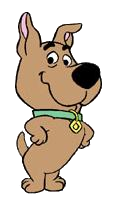
Scooby-Doo is an American media franchise owned by Warner Bros. Entertainment and created in 1969 by writers Joe Ruby and Ken Spears through their animated series, Scooby-Doo, Where Are You!, for Hanna-Barbera. The series features four teenagers: Fred Jones, Daphne Blake, Velma Dinkley, and Shaggy Rogers, and their talking Great Dane named Scooby-Doo, who solve mysteries involving supposedly supernatural creatures through a series of antics and missteps, while traveling using a brightly colored van called the "Mystery Machine". The franchise has several live-action films and shows.

Donald Earle Messick was an American voice actor, known for his performances in Hanna-Barbera cartoons.

Norville "Shaggy" Rogers is a fictional character and one of the main characters in the Scooby-Doo franchise. He is an amateur detective, and the long-time best friend of his lovable dog, Scooby-Doo.
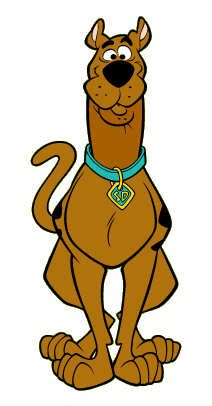
Scoobert "Scooby" Doo is the eponymous character and protagonist of the animated television franchise created in 1969 by the American animation company Hanna-Barbera. He is a male Great Dane and lifelong companion of amateur detective Shaggy Rogers, with whom he shares many personality traits. He features a mix of both canine and human behaviors, and is treated by his friends more or less as an equal. Scooby often speaks in a rhotacized way, substituting the first letters of many words with the letter 'r'. His catchphrase is "Scooby-Dooby-Doo!"

Captain Caveman and the Teen Angels is an American animated mystery comedy series created by Joe Ruby and Ken Spears and produced by Hanna-Barbera Productions for ABC. The series aired during the network's Saturday morning schedule from September 10, 1977, to June 21, 1980. All 40 episodes are available on the Boomerang subscription app.
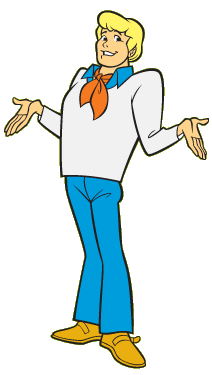
Frederick Herman "Fred" Jones is a fictional character in the American animated series Scooby-Doo, leader of a quartet of teenage mystery solvers and their Great Dane companion, Scooby-Doo. Fred has been primarily portrayed by voice actor Frank Welker since the character's inception in 1969.
Scooby-Doo and Scrappy-Doo can refer to several versions of Hanna-Barbera's Scooby-Doo Saturday morning cartoon series:
Joseph Clemens Ruby was an American animator, writer, television producer, and music editor. He was best known as a co-creator of the animated Scooby-Doo franchise, together with Ken Spears. In 1977, they co-founded the television animation production company Ruby-Spears Productions.

A Pup Named Scooby-Doo is an American animated mystery comedy series produced by Hanna-Barbera. It is the eighth incarnation of the studio's Scooby-Doo franchise and depicts younger versions of the title character and his companions as they solve mysteries, similar to the original television series. The series was developed by Tom Ruegger and premiered on September 10, 1988, airing for three seasons on ABC and during the syndicated block The Funtastic World of Hanna-Barbera until August 17, 1991.

Scooby-Doo on Zombie Island is a 1998 American direct-to-video animated mystery comedy horror film based on the Scooby-Doo franchise. In the film, Shaggy, Scooby, Fred, Velma and Daphne reunite after a year-long hiatus from Mystery, Inc. to investigate a bayou island said to be haunted by the ghost of the pirate Morgan Moonscar. The film was directed by Jim Stenstrum, from a screenplay by Glenn Leopold.

Scooby-Doo, Where Are You! is an American animated comedy television series created by Joe Ruby and Ken Spears and produced by Hanna-Barbera for CBS. The series premiered as part of the network's Saturday morning cartoon schedule on September 13, 1969, and aired for two seasons until October 31, 1970. In 1978, a selection of episodes from the later animated series Scooby's All-Star Laff-A-Lympics and The Scooby-Doo Show were aired on ABC under the Scooby-Doo, Where Are You! title name, and was released in a DVD set marketed as its third season. It also aired on BBC One in the UK from 1970 to 1973. The complete series is also available on Boomerang, Max, and Tubi streaming services.
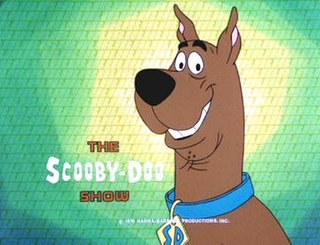
The Scooby-Doo Show is an American animated mystery comedy series. The title of the series is an umbrella term for episodes of the third incarnation of Hanna-Barbera's Scooby-Doo franchise. A total of 40 episodes ran for three seasons, from 1976 to 1978, on ABC, marking the first Scooby Doo series to appear on the channel. Sixteen episodes aired as segments of The Scooby-Doo/Dynomutt Hour in 1976, while eight aired as part of Scooby's All-Star Laff-A-Lympics in 1977. A final set of sixteen episodes came out in 1978, with ten running individually under the Scooby-Doo, Where Are You! name and the remaining six as segments of Scooby's All-Stars.

Scooby-Doo and Scrappy-Doo is an American animated television series and the fourth incarnation of the Scooby-Doo franchise. It was produced by Hanna-Barbera Productions for ABC. It premiered on September 22, 1979, and ran for one season on ABC as a half-hour animated program. A total of sixteen episodes were produced. It aired internationally on BBC One in the UK from 1981 to 1984. It was the last Hanna-Barbera cartoon series to use the studio's laugh track.

The Scooby-Doo and Scrappy-Doo shorts represents the fifth incarnation of the Scooby-Doo franchise.
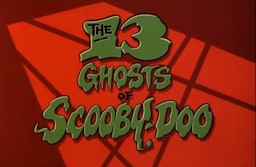
The 13 Ghosts of Scooby-Doo is an American animated television series produced by Hanna-Barbera Productions, and the seventh incarnation of the studio's Scooby-Doo franchise. It premiered on September 7, 1985, and ran for one season on ABC as a half-hour program. Thirteen episodes of the show were made in 1985. It replaced Scary Scooby Funnies, a repackaging of earlier shows; another repackaged series, Scooby's Mystery Funhouse, followed.

Shaggy & Scooby-Doo Get a Clue! is an American animated comedy television series produced by Warner Bros. Animation, as the tenth incarnation of Hanna-Barbera's Scooby-Doo franchise.

Leonard Weinrib was an American actor, comedian and writer. He is best known for playing the title role in the children's television show H.R. Pufnstuf, Grimace in McDonaldland commercials, the title role in Inch High, Private Eye, the original voice of Scrappy-Doo on Scooby-Doo and Scrappy-Doo, Hunk and Prince Lotor on Voltron, and Bigmouth on The Smurfs. He also was the voice for Timer in the "Time for Timer" ABC public service announcements in the early 1970s.

Laff-A-Lympics is an American animated comedy television series produced by Hanna-Barbera. The series premiered as part of the Saturday-morning cartoon program block Scooby's All-Star Laff-A-Lympics which consists of 24 episodes, on ABC in 1977. The show is a spoof of the Olympics and the ABC primetime series Battle of the Network Stars, which debuted one year earlier. It featured 45 Hanna-Barbera characters organized into teams which competed each week for gold, silver, and bronze medals. In each episode, the Really Rottens would try in each event to cheat only to get caught by Snagglepuss each time. One season of 16 episodes was produced in 1977–78, and eight new episodes combined with reruns for the 1978–79 season as Scooby's All-Stars. Unlike most cartoon series produced by Hanna-Barbera in the 1970s, Laff-A-Lympics did not contain a laugh track. Scooby’s Laff-a-Lympics was originally owned by Taft Broadcasting, Warner Bros. Domestic Television Distribution currently owns the series through its two in-name-only units, Warner Bros. Family Entertainment and Turner Entertainment.
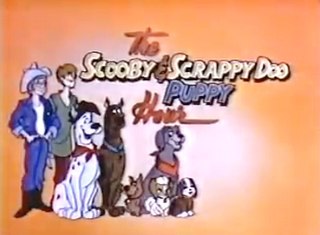
The Scooby & Scrappy-Doo/Puppy Hour is a 60-minute Saturday morning animated package show co-produced by Hanna-Barbera Productions and Ruby-Spears Enterprises and broadcast on ABC from September 25, 1982 to December 18, 1982. The show contained segments of Scooby-Doo & Scrappy-Doo (Hanna-Barbera), Scrappy & Yabba-Doo (Hanna-Barbera) and The Puppy's New Adventures (Ruby-Spears).
